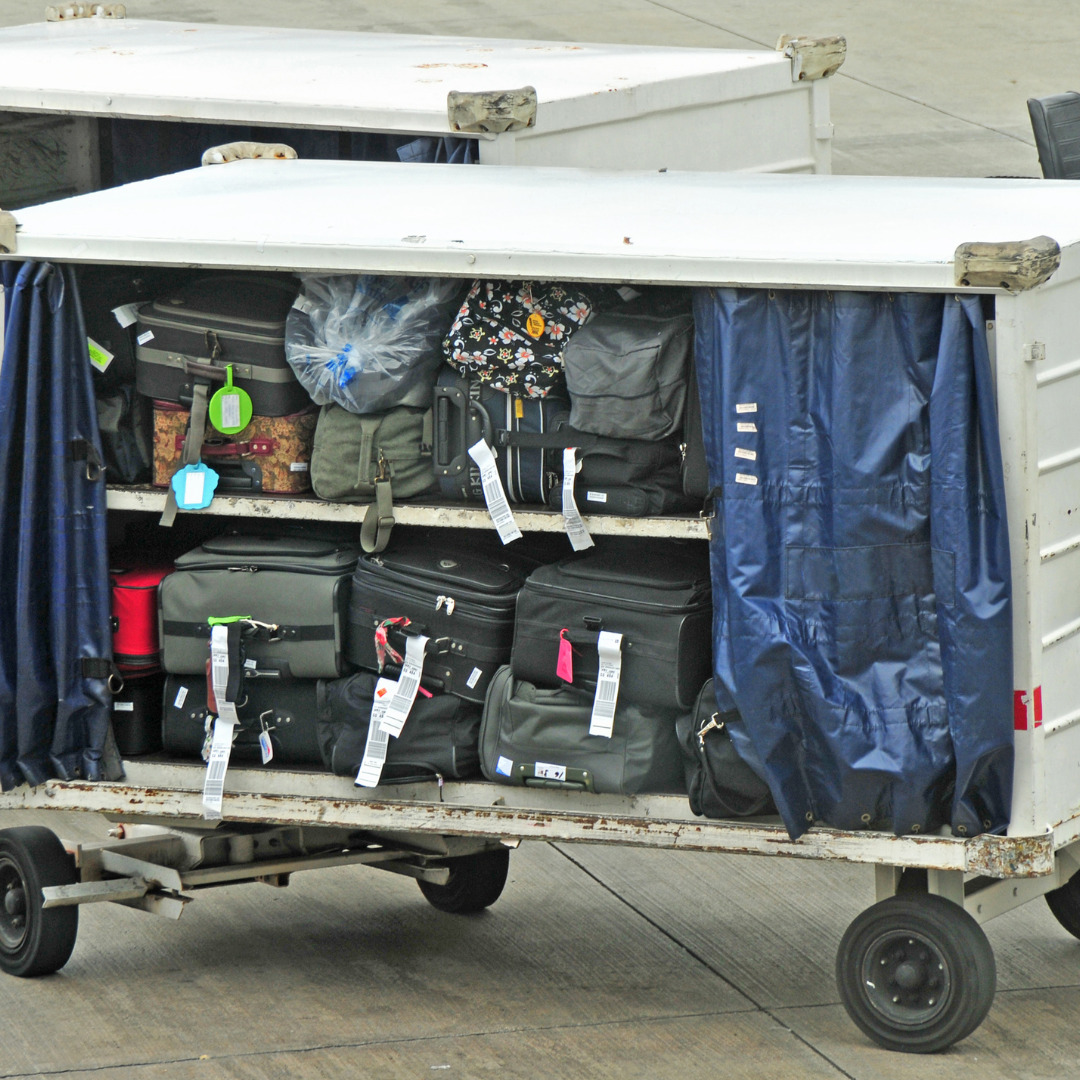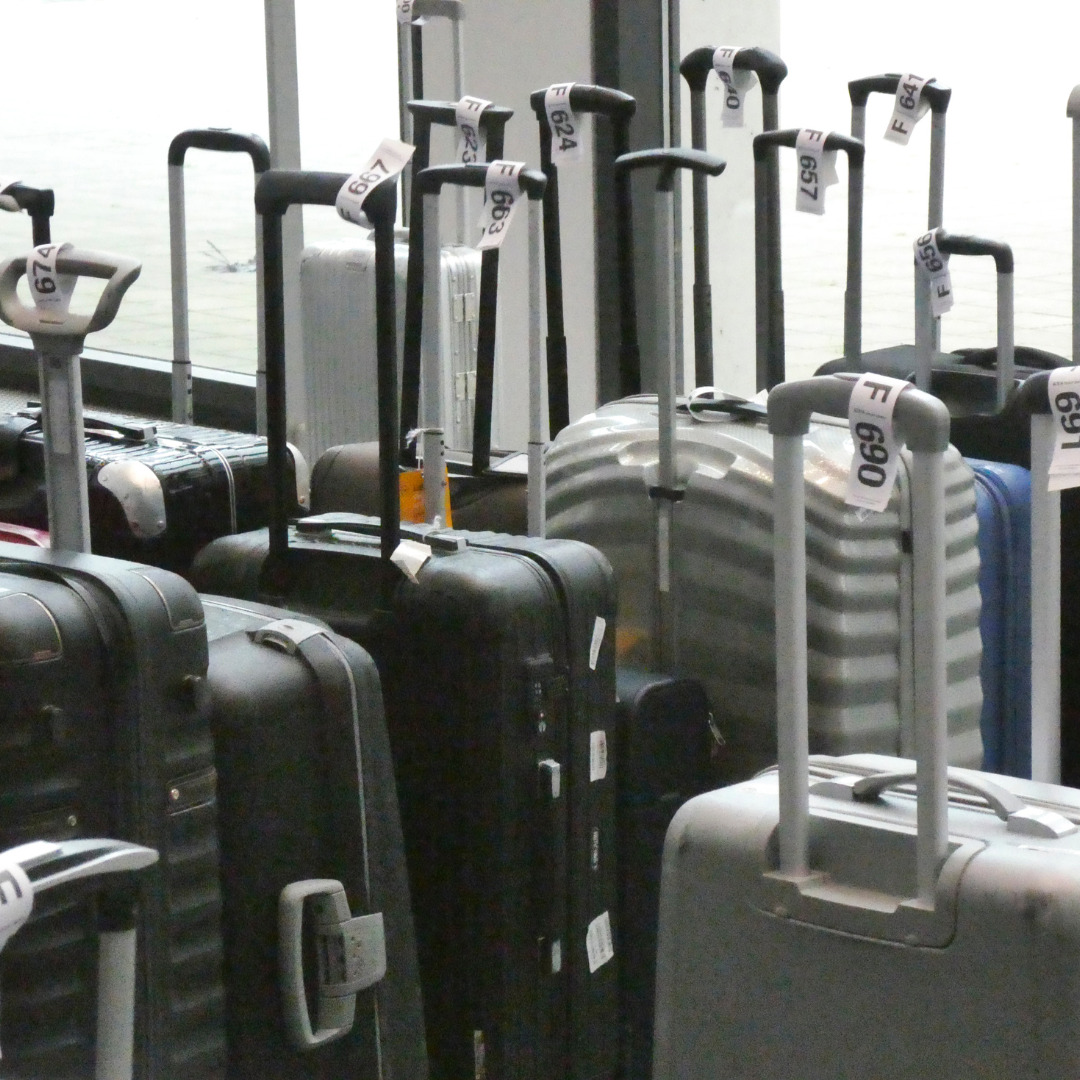Comparison of CO2 emissions by mode of transport. Trade by air cargo is an exception
Table of Contents
1: CO2 Emissions per Unit Weight by Mode of Transportation
2: Export unit price and cost per means of transportation
3: CO2 Emissions per Passenger by Mode of Transportation
4: Summary
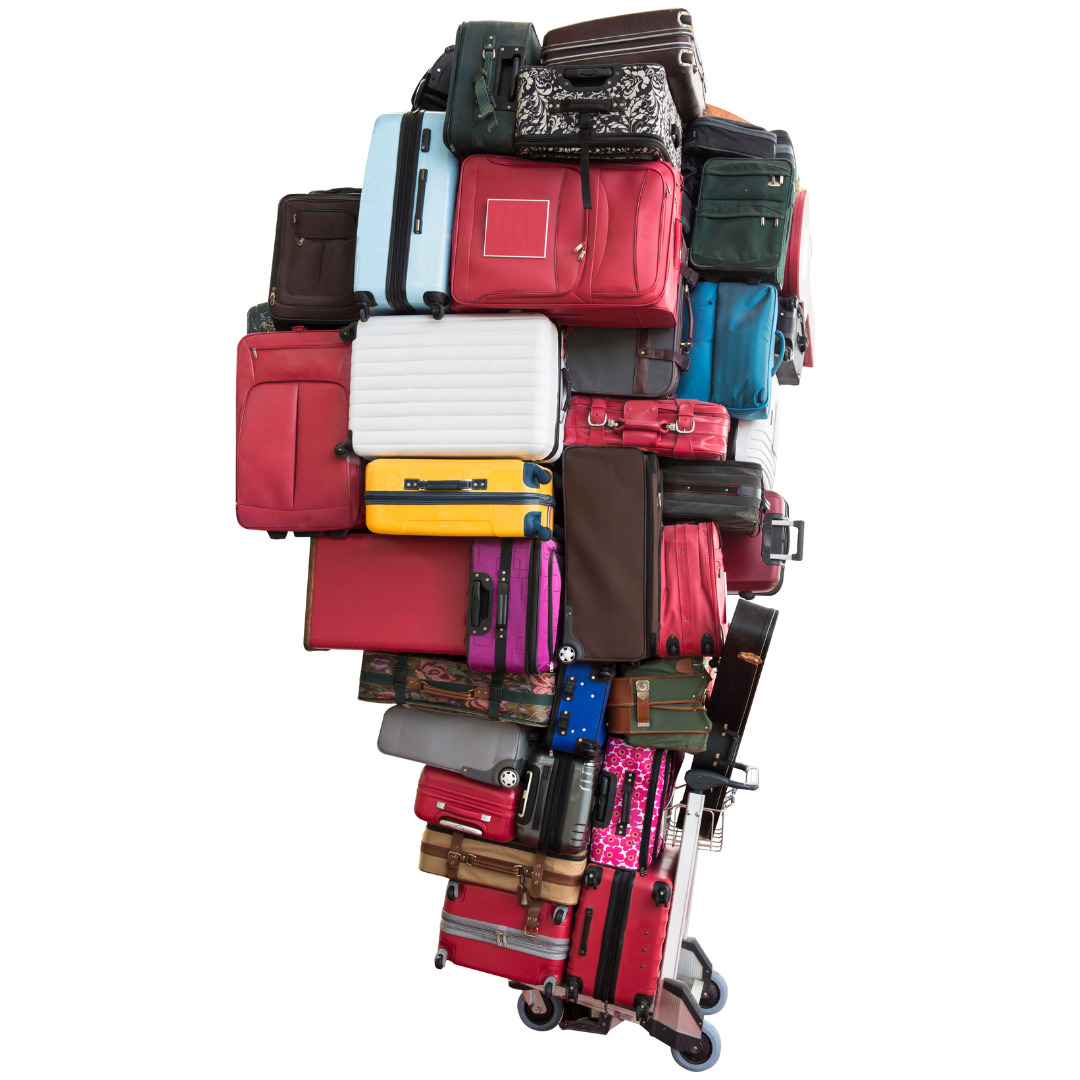
1: CO2 Emissions per Unit Weight by Mode of Transportation
Over the past two months, we have made nine posts on Sustainable Travel, using a lot of data. This is our tenth post, so we will conclude our posts on “Sustainable Travel” once and for all. The last post is data on CO2 emissions per cargo and passenger for each mode of transportation. We hope that these data will encourage many people to think about transportation and checked baggage.
In the “Sustainable Travel” series, we calculate CO2 emissions from checked baggage on airplanes by using data from “Guidelines for Measuring and Managing CO2 Emissions from Freight Transport Operations” by ECTA (The European Clean Trucking Alliance). Freight Transport Operations” of ECTA (The European Clean Trucking Alliance). The CO2 emissions intensity of cargo transported by airplanes (ton-kilometer) used in the calculations is 0.602 kgCO2/tkm.
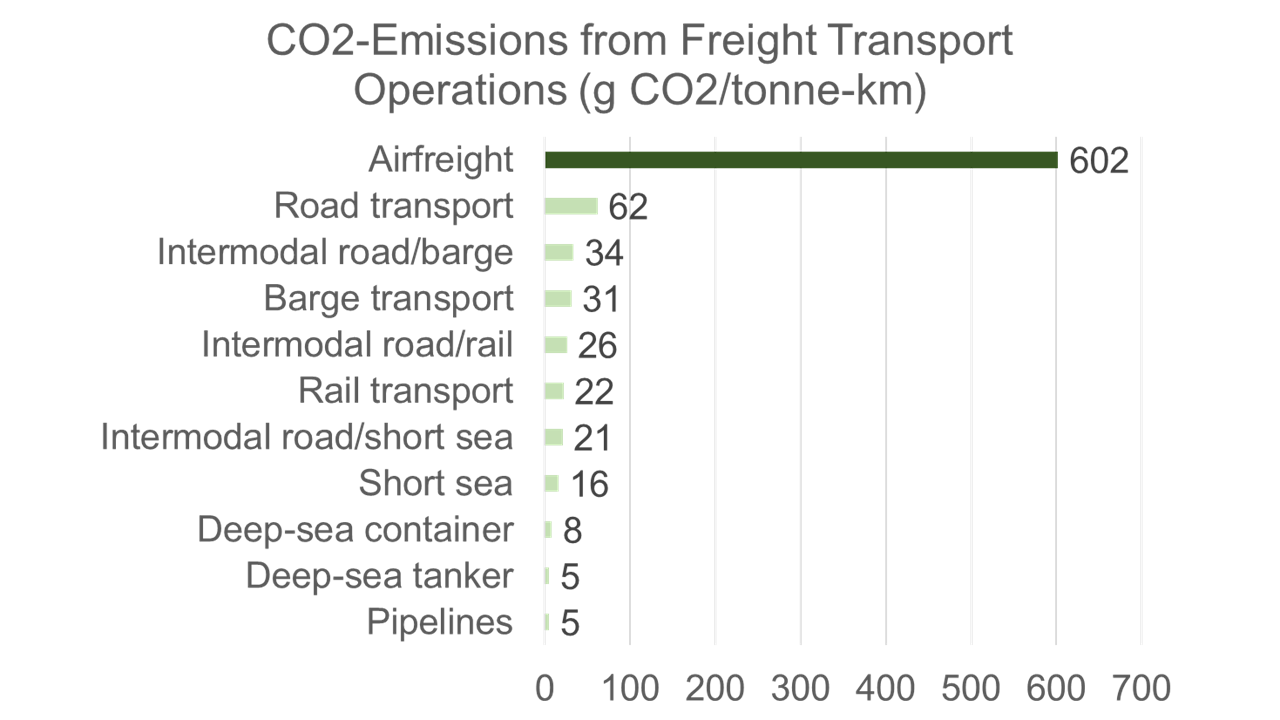
Source: ECTA
According to ECTA data, the CO2 emissions intensity of air cargo is 9.7 times higher than that of the truck and other road transport and 27.4 times higher than that of rail transport. This shows how large the CO2 emissions intensity of air cargo is. Carrying heavy checked baggage on board an airplane when traveling is a very sinful way to address the issue of climate change.
2: Export unit price and cost per means of transportation
We calculated the unit trade value (import/export unit cost) for each means of transportation using 2021 data (Bureau of Transportation Statistics) for the United States, the world’s largest economy and largest trade value. The unit trade cost for air cargo was $131,319/short ton ($144,713/ton), which translates to ¥17.07 million/short ton (¥18.81 million/ton) at ¥130/$. Judging from the high trade unit price, it is clear that air cargo is used only for trade in very high-value items such as precision machinery.
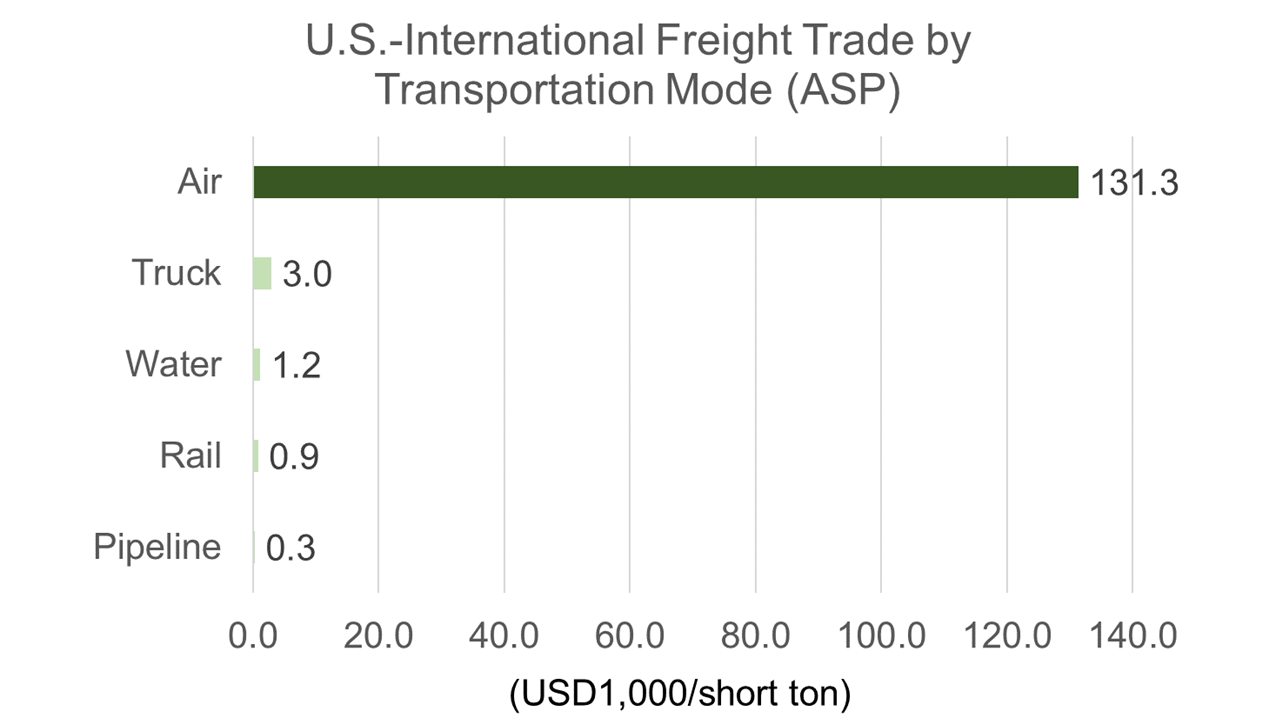
Source: Bureau of Transportation Statistics
Therefore, airfreight, which accounts for 29.6% of trade in value terms, only accounts for 0.4% in weight terms. On a weight basis, airfreight trade is the exception of the exception.
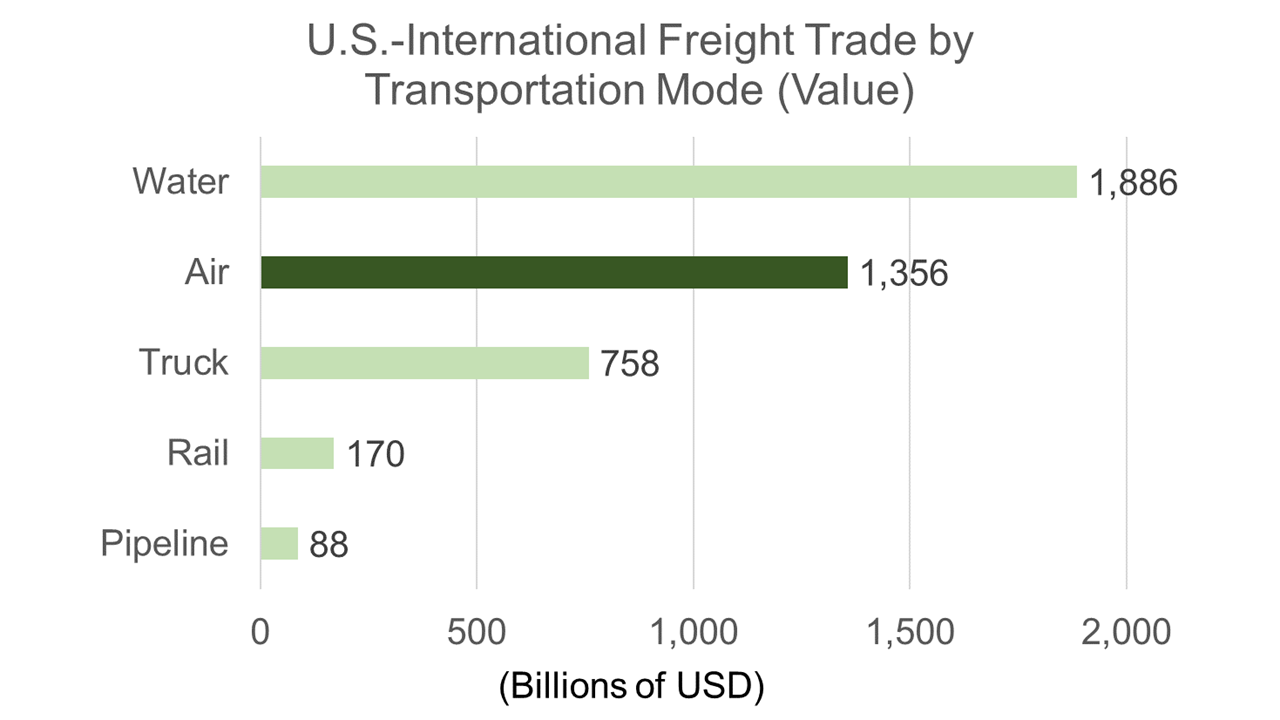
Source: Bureau of Transportation Statistics
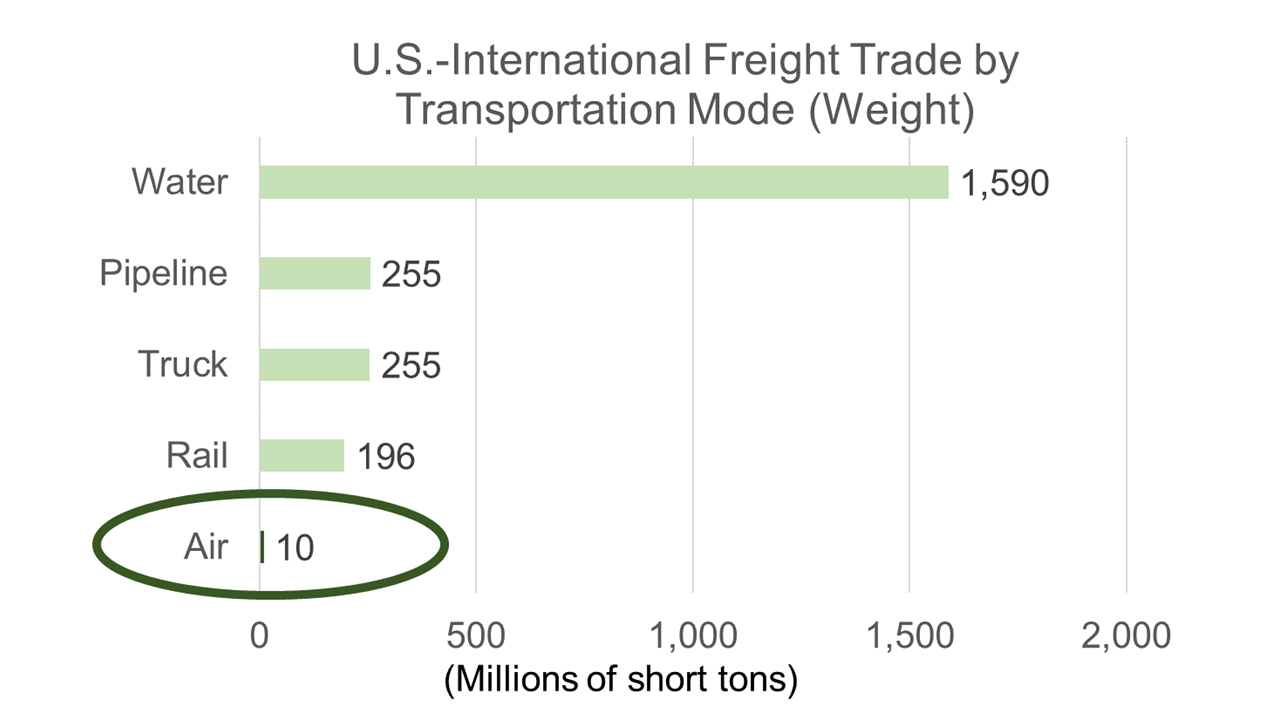
Source: Bureau of Transportation Statistics
Air freight costs are also extremely high. According to The Geography of Transport Systems (published in 2020), air freight costs 137.5 cents/ton-mile, 19.8 times the average cost of 6.95 cents for other modes of transportation. The extremely high cost of air cargo means that only very high-value goods can be traded.

Source: The Geography of Transport Systems
The unit trade value of air cargo in the U.S. is $2,894 (¥376,000) when converted to 20 kg, the weight of most passengers’ checked baggage. Is a traveler’s checked baggage really worth $2,894 (¥376,000)?
3: CO2 Emissions per Passenger by Mode of Transportation
Following the data for freight transportation, let us check the CO2 emissions per passenger for each mode of transportation. Here we used data from the International Energy Agency (IEA) and Our World in Data. Our World in Data is based on data from the UK Department for Business, Energy & Industrial Strategy. Business, Energy & Industrial Strategy.
The IEA publishes a range of intensity of CO2 emissions per passenger (2019) for each transportation mode. Comparing median values, the lowest CO2 emission transportation was rail 62 g/km and the largest CO2 emission was large cars (192 g/km). The median value for airplanes is 140 g/km, which is between 192 g/km for large cars and 117 g/km for small and medium cars.
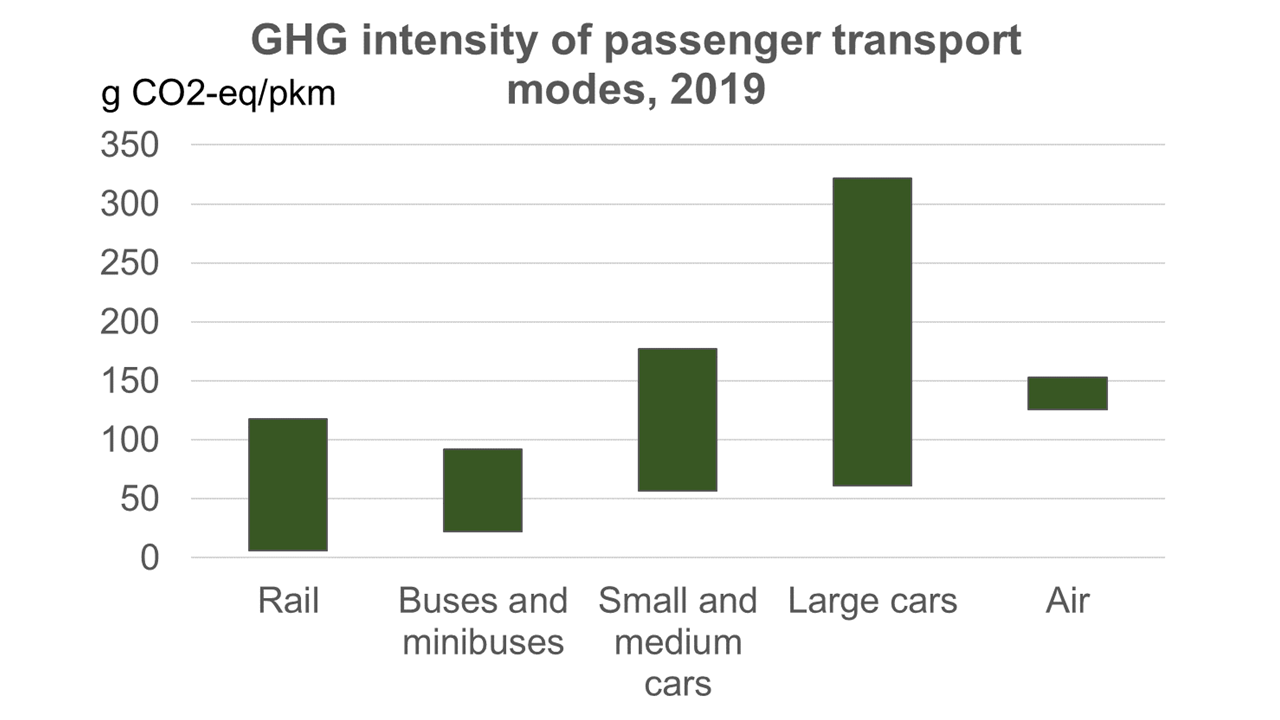
Source: IEA
Our World in Data had more detailed data (2018). The smallest CO2 emissions were 6 g/km for international trains (Eurostar). The largest CO2 emissions were 599 g/km for long-haul (first class) airplanes. It is interesting that the IEA data also shows that large cars emit more CO2 than airplanes. Flying by first class and taking a limousine car from the airport to downtown are the worst CO2 emissions of travel.
The carbon footprint of travel per kilometer, 2018
GHG emissions (gCO2e/km) Long-haul flight (first class) 599 Long-haul flight (business class) 434 Large car (petrol) 283 Domestic flight 255 Long-haul flight (economy+) 240 Short-haul flight (business class) 234 Black cab (taxi) 212 Large car (diesel) 209 Medium car (petrol) 192 Medium car (diesel) 171 Short-haul flight (economy) 156 Small car (petrol) 154 Taxi 150 Long-haul flight (economy) 150 Small car (diesel) 142 Motorcycle (large) 135 Large car (hybrid) 132 Ferry (car passenger) 130 Medium car (hybrid) 109 Small car (hybrid) 105 Bus 105 Motorcycle (medium) 103 Petrol car, 2 passengers 96 Diesel car, 2 passengers 85 Motorcycle (small) 84 Large car (plug-in hybrid electric) 77 Medium car (plug-in hybrid electric) 71 Large electric vehicle (UK electricity) 67 Medium electric vehicle (UK electricity) 53 Petrol car, 4 passengers 48 Small electric vehicle (UK electricity) 46 Diesel car, 4 passengers 43 National rail 41 Light rail and tram 35 London Underground 31 Small car (plug-in hybrid electric) 29 Coach 28 Ferry (foot passenger) 19 Eurostar (international rail) 6
Source: Our World in Data
4: Summary
What do you all feel after reading the above data from 1-3? It is clear that it is extremely irrational to carry checked baggage on board airplanes when traveling, both in terms of climate change and transportation costs. Do you still need checked baggage?
